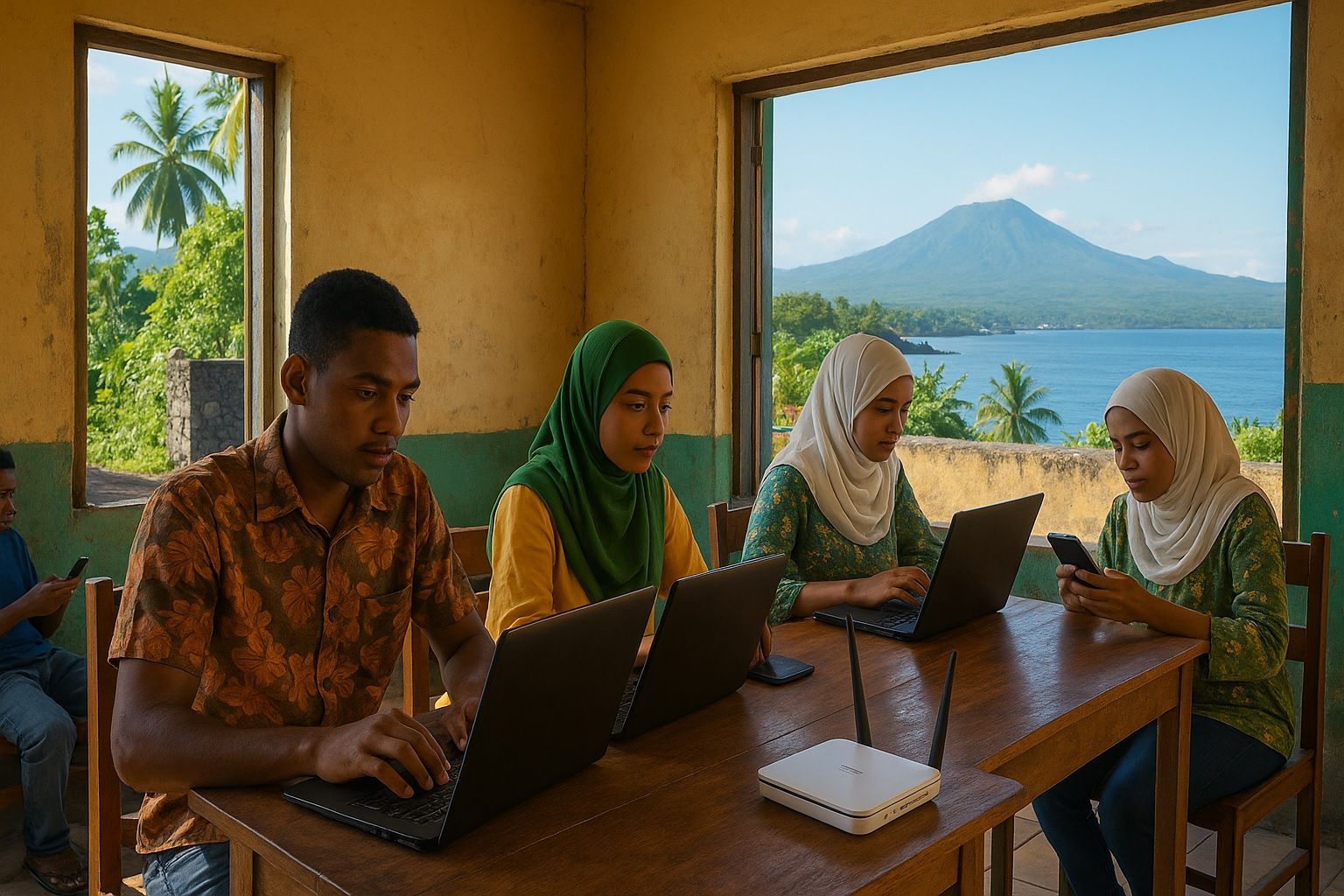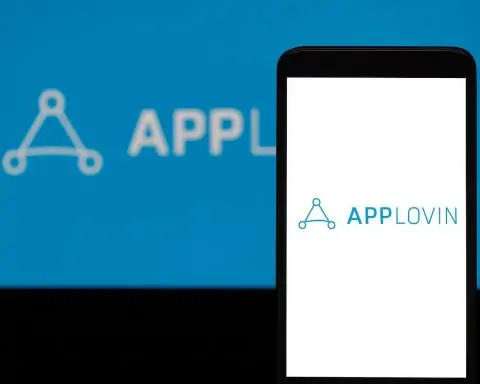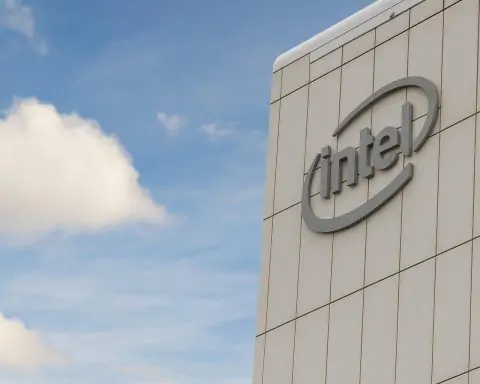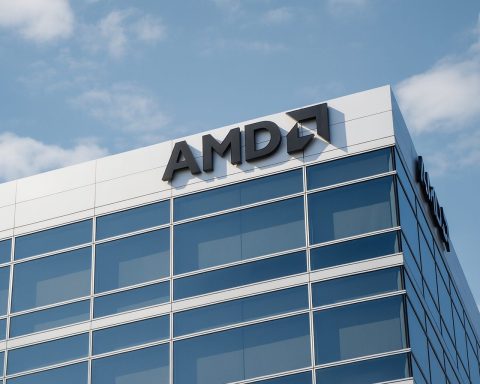- The Union of the Comoros comprises Grande Comore (Ngazidja), Anjouan (Ndzuwani), Mohéli (Mwali) and the Mayotte territory, with island geography that complicates terrestrial network rollout.
- Submarine cables have transformed connectivity: EASSy landed in Moroni in 2010–2011, AVASSA was completed in 2016, and FLY-LION3 landed at Itsandra, Moroni in 2019, creating three major international links.
- Internally, AVASSA connects Grande Comore and Anjouan (Mohéli is linked by microwave), while a Comoros Domestic Cable System (CDCS) is planned and Comoros Cables manages open wholesale access for both carriers.
- Fixed broadband remains scarce, with about 3,000 fixed broadband subscriptions in 2023 (roughly 0.3 per 100 people), historically 512 kbps to a few Mbps ADSL, and virtually no residential FTTH.
- Mobile broadband dominates, with 679,000 active mobile connections in January 2025 (about 77.6% of the population) and roughly 76% of mobile connections being data-capable.
- 4G access reached about 84% of the population in 2023, while 5G was authorized in May 2025 and is in pilot/limited deployment with coverage under 1%.
- As of January 2025, about 312,000 people in Comoros were internet users, equating to roughly 35.7% internet penetration, with urban areas better served than rural areas.
- Comores Telecom (Huri) and Telma Comores (Yas Comores) form a tight duopoly, roughly splitting the market 53% to 47% in 2023, driving 4G/5G rollouts and service bundles.
- Affordability remains a major challenge, with a 2024 analysis showing a low-consumption 3G data package at about 6.63% of monthly GNI per capita and 1 GB of data around $12.50.
- Regulation and support come from ANRTIC, the 2014 Telecommunications Act, World Bank RCIP and IFC loans, and plans for 2Africa landing, Starlink rollout (projected 2024), and Connect 2030 ICT initiatives.
Comoros is a small archipelago nation in the Indian Ocean, comprised of three main islands – Grande Comore (Ngazidja), Anjouan (Ndzuwani), and Mohéli (Mwali) – along with the neighboring French territory of Mayotte [1]. Its geography poses unique challenges for telecommunications: the islands are separated by ocean channels and are volcanic and mountainous, making infrastructure deployment difficult and costly. For many years, Comoros’ insular landscape led to island gaps in connectivity, with limited inter-island links and reliance on expensive satellite connections for external communication. Today, however, the country is undergoing a digital transformation. Undersea fiber-optic cables now connect the islands to each other and to international networks, mobile broadband is expanding, and new satellite services like Starlink are on the horizon. This report provides an overview of Comoros’ geography and telecom infrastructure, the current state of Internet access (including fiber, mobile, wireless, and satellite connectivity), the major service providers, key statistics on usage and speeds, pricing and regulatory context, ongoing initiatives to improve access, the challenges that persist, and future prospects for bridging the digital divide in this small island developing state.
Geography and Infrastructure Challenges
Island Topography and Isolation: The Union of the Comoros is an archipelago off Africa’s east coast with a total land area just over 2,000 km² [2]. The islands are of volcanic origin – Grande Comore alone is dominated by Mount Karthala (2,361 m), an active volcano [3]. Rugged terrain and dispersed settlements make terrestrial network rollout difficult. Moreover, each main island is separated by ocean, meaning that connecting them requires either submarine cables or wireless links (e.g. microwave or satellite). Historically, this isolation led to patchy telecom coverage. Telephone service was long limited to a few towns on each island, and early Internet connectivity depended on satellite uplinks due to the lack of undersea fiber [4] [5]. High poverty levels also constrained infrastructure investment [6]. These geographic factors resulted in Comoros lagging behind in Africa’s internet revolution through the 2000s.
Submarine Cables Linking the Islands: Over the past decade, Comoros has made strides in closing the connectivity gaps by deploying submarine fiber-optic cables. The country now has several landing stations and undersea cables connecting it internally and externally. There are four landing points (Moroni and Chindini on Grande Comore, Mutsamudu on Anjouan, and a landing for Mohéli) that host five cable systems [7] [8]. Notably, the Eastern Africa Submarine System (EASSy) cable landed in Moroni around 2010–2011, giving Comoros its first fiber link to the global Internet [9] [10]. Subsequently, the AVASSA cable (delivered in 2016) was built to connect Grande Comore and Anjouan with Mayotte [11] [12]. AVASSA was a critical project that replaced slow microwave links between the islands with high-capacity fiber; as Comoros Telecom’s CTO noted, “historically, microwave technology carried the majority of inter-island capacity” but could no longer support growing data needs [13]. In 2019, another major cable called FLY-LION3 landed at Itsandra, Moroni, linking Grande Comore directly to Mayotte and onward to Madagascar [14] [15]. FLY-LION3 is a 400 km extension that connects into the existing LION/LION2 network and provides a junction to EASSy [16] [17], thereby diversifying Comoros’ international routes. In effect, Comoros now has multiple submarine connections – EASSy, AVASSA, and FLY-LION3 are operational, and even the giant new 2Africa cable is slated to include a landing in Comoros [18] [19]. These cables greatly expand bandwidth and improve resiliency. From virtually zero fiber in 2010, the islands have become much better connected. For instance, Comores Telecom’s international bandwidth, which was only about 900 Mbps in 2015, grew to 10 Gbps by 2018 [20] and continues to rise as new cable capacity comes online.
Domestic Backbone and Inter-Island Connectivity: Within the country, linking the three main islands remains a priority. Grande Comore, Anjouan, and Mayotte are now interconnected by AVASSA (and indirectly by FLY-LION3 via Mayotte), but Mohéli (Mwali) – the smallest island – was not included in AVASSA’s initial route [21]. Instead, Mohéli has been connected via microwave radio links to its neighbors. However, plans have been made for a Comoros Domestic Cable System (CDCS) to ensure all islands have fiber access [22]. In fact, a company called Comoros Cables was established to manage Comoros’ fiber-optic infrastructure – including the EASSy and FLY-LION3 international links as well as an inter-island domestic backbone [23]. Comoros Cables is jointly owned by the government, Comores Telecom, and Telma Comores (the second operator), to provide open wholesale access [24]. This setup is intended to avoid bottlenecks and ensure both carriers can use the undersea cables on equal terms, thereby lowering costs for end users. Overall, despite challenging geography, Comoros now has the basic fiber infrastructure in place to connect its islands and integrate with global networks. The remaining gaps (like Mohéli’s link) are being addressed through domestic fiber projects or future cable extensions.
Current State of Internet Access in Comoros
Connectivity Types and Technologies
Fixed Broadband: Fixed wired internet access is very limited in Comoros. The legacy incumbent, Comores Telecom, has offered ADSL (telephone line broadband) for years, but uptake is minimal. As of 2023, there were only about 3,000 fixed broadband subscriptions in the entire country [25] – an extremely low figure in a population of ~850,000. This translates to roughly 0.3 subscriptions per 100 people, one of the lowest fixed broadband penetration rates globally [26] [27]. Fixed broadband options historically ranged from 512 kbps up to a few Mbps ADSL plans, with high prices (e.g. a 512 kbps ADSL plan cost about US$42 per month in 2016, over 60% of average per-capita income) [28]. Given these costs, few households could afford fixed lines. Fiber-to-the-home (FTTH) is virtually nonexistent for residential users, though there may be isolated fiber connections for institutions or business parks in Moroni. Instead, fixed wireless is emerging as a preferred solution for home broadband. Comores Telecom, for example, has launched a service called WTTx (branded “NEMA Net”) which uses 4G/LTE wireless routers to deliver home internet without a physical line [29]. This suggests the incumbent is pivoting to fixed-wireless LTE rather than expanding copper or fiber last-mile. In June 2025, Comores Telecom even celebrated its 20th anniversary by announcing the rollout of 5G and WTTx services [30], indicating that future “fixed” broadband in Comoros will likely be delivered via wireless 4G/5G networks (sometimes called FWA – Fixed Wireless Access). In short, fixed wired internet remains scarce and confined mainly to government offices or businesses; for most Comorians, broadband means wireless.
Mobile Broadband: By far the primary mode of internet access in Comoros is through mobile networks. Mobile telephony took off in the 2000s and 2010s, and today cellular service reaches most populated areas. As of early 2025 there were 679,000 mobile connections active in Comoros [31], equivalent to about 77.6% of the population [32]. (It’s common for individuals to have multiple SIM cards, so the number of connections exceeds the number of people.) Importantly, the majority of these connections now support data: roughly 76% of mobile connections are “broadband” (3G/4G/5G capable) [33]. Comoros was somewhat late to adopt 3G and 4G by regional standards – the incumbent Comores Telecom introduced 3G in the 2010s and only rolled out 4G LTE in the late 2010s. The entry of a competitor (Telma Comores) accelerated 4G deployment. As of 2023, an estimated 84% of the population has access to at least a 4G signal from one of the operators [34]. 4G coverage is concentrated in urban and peri-urban areas (the capital Moroni and other large towns on each island), whereas some remote or rural areas still rely on 2G/3G networks. 5G technology has just arrived: in May 2025, the regulator authorized both operators to begin 5G services [35] [36], and trials/new sites are underway in Moroni. However, 5G coverage remains <1% for now [37] – essentially in pilot phase. Over the next few years, 5G is expected to target the capital and maybe some strategic locations (like airports or universities), given the small market size.
Fixed Wireless and Community Networks: Outside of the formal operators’ networks, there are few alternatives. Some businesses and NGOs utilize VSAT (satellite) connections in areas with poor coverage, but these are very expensive. There have been no large-scale community Wi-Fi or mesh network programs reported in Comoros; most users depend on mobile data even for home use. Public Internet access points (telecenters or cybercafés) were more common in the 2000s, but with growing mobile phone ownership, cybercafés have dwindled. The government and donors have worked to connect schools and local governments via subsidized broadband – for example, the World Bank funded connectivity for schools/universities as part of an ICT project [38]. Those connections likely use either fixed wireless links or shared fiber where available.
Satellite Internet: Given Comoros’ isolated location, satellite communication has always been important – initially for international voice/data transit, and now as a backup or niche solution. Before the undersea cables, satellite was the only way to connect globally, but it was very limited (only a few Mbps of international bandwidth, leading to slow speeds and high latency). Today, with multiple fiber cables in place, satellite links serve a supplemental role. Comoros Telecom maintains satellite backup for resiliency (in case of submarine cable outages), and remote sites like island weather stations or some villages might use VSATs. As for satellite internet service to end-users, that has been minimal due to cost; traditional GEO satellite broadband plans (like Inmarsat, Thuraya, or YahClick) are out of reach for average citizens. However, the landscape is changing with low-earth-orbit satellites. Starlink, SpaceX’s satellite internet service, is expanding in Africa and has included Comoros on its rollout roadmap. According to recent reports, Starlink is expected to become available in Comoros by 2024 [39]. If Starlink launches locally (contingent on regulatory approval), it could deliver high-speed internet even on remote islands or rural villages – essentially bypassing the terrestrial infrastructure. This is particularly relevant for Mohéli or sparsely populated corners of Grande Comore where fiber and even 4G may not reach. That said, early Starlink service will be pricey (equipment and subscription) and thus likely limited to businesses, government, or affluent users initially. Another LEO constellation, OneWeb, has also secured global coverage in 2023 and might partner to serve Indian Ocean nations, though no specific Comoros plans are confirmed. In summary, satellite signals are poised to fill remaining gaps: after using satellites as a stopgap in the past, Comoros may soon leverage modern satellite broadband to ensure every last mile – or rather last island – is connected.
Major Internet Service Providers (ISPs)
Despite its small market, Comoros has moved from a monopoly to a duopoly in telecom services. There are two principal ISPs/mobile operators in the country today:
- Comores Telecom: The state-owned incumbent operator (full name Société Nationale des Télécommunications, branded HURI for mobile services) has been the dominant provider of fixed and mobile services for decades. It operates the fixed telephone network, ADSL broadband, and one of the mobile networks. Comores Telecom was historically a monopoly and, by 2013, its performance was poor – charging high prices for mediocre service (only ~40% mobile penetration and under 1% internet penetration back then) [40]. Efforts to privatize it stalled, and instead the strategy shifted to introducing competition [41]. Today Comores Telecom still retains a large share of the market (especially in older 2G voice and fixed lines), and it has upgraded its offerings to include 3G, 4G LTE, and as of 2025 even 5G on a pilot basis. It markets mobile services under the brand Huri or Huri Mobile. The company also provides national and international bandwidth via its management of the historic landing stations. However, as noted, the international cables are now managed through a separate wholesale entity (Comoros Cables) to allow fair access [42]. Comores Telecom has faced criticism for lack of innovation and high tariffs, but competition has forced it to improve. In June 2025, it announced the rollout of 5G and a new fixed-wireless (WTTx) broadband service to modernize its portfolio [43].
- Telma Comores (Telco SA) / Yas Comores: The challenger operator is Telma Comores, officially Telecom Comores S.A. (often abbreviated Telco SA). It entered the market in 2016 after winning an international license bid in 2015 [44] [45]. Telco SA is a subsidiary of Madagascar’s Telma (Telecom Malagasy) and part of the pan-African Axian Group [46] [47]. In a market first, Telma Comores introduced competition against Comores Telecom’s mobile monopoly. It built out a new nationwide mobile network (2G/3G/4G) and quickly captured about 25% of the market within a year of launch [48]. By 2023, Telma (also rebranded as “Yas Comores” under Axian’s new unified branding [49] [50]) had roughly half the mobile market share. In fact, the two ISPs now split the market roughly 53% (Telma/Yas) vs 47% (Comores Telecom) [51] [52], indicating a very tight duopoly. Telma Comores is known for pushing advanced services – it launched 4G LTE and popularized mobile data packages, and is now licensed for 5G as well [53]. It also offers mobile money and other digital services. However, Telma initially faced challenges interconnecting with Comores Telecom and accessing infrastructure (the incumbent was reportedly uncooperative about sharing towers or bandwidth) [54]. Over time, regulations sorted this out. Telma/Yas has invested in its own infrastructure, including participating in the FLY-LION3 cable consortium to bring high-capacity fiber to Comoros [55]. The presence of this competitor has driven down prices and improved quality, ending the era of a single “gatekeeper” ISP.
Aside from these two, there are no other major ISPs in Comoros. The market is simply too small to sustain additional full-scale operators. (At one point a second mobile license was briefly awarded in 2007 to a company called Twama Telecom, but it never launched and was cancelled [56].) A few niche providers exist for corporate services – e.g., satellite communications firms or perhaps Comoros Cable itself providing wholesale bandwidth to large clients – but average consumers choose between Comores Telecom and Telma Comores for internet access. Both companies offer bundled services: mobile voice/data plans, fixed wireless home broadband, and even IPTV or digital TV add-ons via their networks.
Internet Usage and Key Statistics
Penetration and User Base: Internet usage in Comoros, while still low by global standards, has been growing steadily. As of January 2025, there were an estimated 312,000 internet users in the country [57]. This corresponds to an internet penetration rate of 35.7% of the population [58]. In other words, about one in three Comorians uses the Internet (defined as access at least once in three months). This is a marked improvement from earlier in the decade – for example, in 2017 internet penetration was around 10-15%, and in 2021 it was about 27% [59]. The introduction of cheaper mobile data by Telma and the expansion of 3G/4G coverage have driven this growth. However, Comoros still lags behind the Africa regional average (around 39% in 2021) [60] and far behind global averages. The majority of users access the internet via smartphones on mobile networks, given the scarcity of fixed connections.
Urban–Rural and Inter-Island Disparities: There is a significant digital divide within Comoros. Urban areas – notably the capital Moroni (on Grande Comore) and second-largest city Mutsamudu (Anjouan) – enjoy far better internet access than rural villages or smaller islands. These towns have 4G service, internet cafés, and many residents with smartphones. Meanwhile, remote communities (for instance, in the highlands of central Grande Comore or parts of Mohéli) may only have 2G voice coverage or no signal at all in some spots. While 84% of the population is technically under 4G coverage [61], the remaining 16% without 4G likely reside in sparsely populated or hard-to-reach locales that only have basic GSM/EDGE service. Mohéli in particular, with its small population (~50,000), has less network investment – it might have 3G in the main town Fomboni, but much of the island relies on older infrastructure. The urban-rural gap is also seen in adoption rates: literate, younger, and higher-income city dwellers are the primary internet users (for example, Facebook usage among urban youth is far higher than among rural older adults) [62]. This gap is something the government hopes to address through universal access programs and (potentially) satellite solutions for remote areas.
Bandwidth and Speeds: Internet speeds in Comoros are improving but remain relatively slow. According to Internet Society data, the average download speed for users in Comoros in 2023 was about 9 Mbps (and similar for mobile and broadband) [63] [64]. This is a modest speed – enough for basic web browsing and streaming low-resolution video, but not on par with global broadband averages. Upload speeds are typically a couple of Mbps. These figures represent a jump from the mid-2010s, when average downloads were only ~2 Mbps [65]. The upgrades in international bandwidth (via new cables) and the rollout of 4G have helped raise speeds. However, performance is still constrained by factors like limited infrastructure on-island (congested cell towers, lack of fiber backhaul between towns), as well as the fact that many users access via 3G networks which offer only a few Mbps at best. Additionally, the latency to servers in Europe or America is high (hundreds of milliseconds) since even with fiber, data must traverse long routes (often via Tanzania or Madagascar to submarine cables). Local content caching is minimal – less than 1% of top websites are cached in-country [66] – which means most requests go to overseas servers, adding to latency. The government and ISPs are aware of these issues; for instance, Comoros recently scored only 22% on an Internet resilience index, indicating low ability to maintain service quality under strain [67] [68]. The introduction of 5G in coming years could raise peak speeds dramatically (5G can theoretically offer hundreds of Mbps), but its impact will depend on backhaul capacity and coverage scope.
Mobile vs Fixed Usage: As noted, the vast majority of internet data in Comoros travels over mobile networks. With only ~3,000 fixed broadband lines [69] [70], even assuming each is used by multiple people, well over 90% of the 312k internet users are on mobile data. Among mobile connections, about 76% are 3G/4G/5G capable [71] – meaning roughly three-quarters of mobile subscribers could use the internet. In reality, some low-end 3G plans are used only for WhatsApp or basic apps due to cost constraints. But mobile internet usage is rising: datareportal notes a 5.5% increase in mobile connections from 2024 to 2025 [72] [73], and a 1.9% increase in internet users over that year [74]. Another interesting stat is that in Comoros each user doesn’t consume much bandwidth on average, partly due to price – the country’s total international bandwidth remains relatively low (on the order of tens of Gbps shared) and many users just do light activities like messaging. This is beginning to change as younger Comorians adopt video-rich social media and as diaspora connectivity encourages more video calls with relatives abroad.
Pricing and Affordability
Cost of Data: Internet access in Comoros is expensive relative to incomes, even after some price reductions in recent years. A 2024 affordability analysis found that a basic “low-consumption” mobile internet package (using at least 3G) costs about 6.63% of monthly GNI per capita [75]. This is more than triple the UN Broadband Commission’s target of 2% of income for entry-level broadband. To put it simply, the average Comorian must spend almost a week’s wages just to afford a modest data bundle each month. Another way to look at it: the average price of 1 GB of data in Comoros is around $12.50 – among the highest in the region [76]. (For comparison, 1 GB in neighboring Madagascar costs about $3.40 [77] [78], and in Mauritius about $13 [79] [80].) These high costs have been a major barrier to wider internet adoption. Many Comorians resort to very small pay-as-you-go packages – e.g. a few hundred MB for a day or social-media-only packs – which limits the activities they can do online.
Service Plans: Comores Telecom and Telma Comores both offer a range of plans, but pricing is closely matched (there’s limited price war given the duopoly). Comores Telecom has in the past kept ADSL prices stagnant even after fiber arrived [81], indicating low competitive pressure on fixed services. On mobile, Telma’s entry did push prices down somewhat – for instance, Telma introduced innovative plans and even unlimited night data options – but overall data remains costly. A monthly 1 GB mobile data plan was reported at around 17 USD (about 7,500 KMF) in 2016 [82]; that price has fallen with Telma’s competition, but is still in the range of $10-15 today for 1 GB if not part of a promotion. Prepaid data bundles are the norm (postpaid subscriptions are rare). Both operators frequently run promotions for bonus data or social media passes. Nonetheless, for a citizen in a rural village, even buying a 100 MB daily pack for ~500 KMF can add up and be unaffordable on a regular basis. This is why internet use is often intermittent or limited to text-based apps for many.
Affordability Initiatives: The government and international partners recognize the affordability problem. Under the World Bank’s ICT project, there were wholesale price reductions achieved by bringing in new international capacity – the wholesale price of bandwidth reportedly dropped significantly (one source noted it fell from $5,500 per Mbps/month to much lower after competition) [83]. Comoros Cables’ open-access model is meant to ensure that Telma and Comores Telecom can purchase international capacity cheaply and pass savings to consumers. Additionally, the Universal Service Fund (if operational under regulator ANRTIC) could subsidize rural connectivity or public Wi-Fi spots, but little information is public on USF projects. There have also been discussions about implementing price caps or encouraging more ISP competition (e.g., ISPs reselling bandwidth) to drive down consumer tariffs. So far, tangible outcomes have been limited – prices remain high, though slowly trending downward. The emergence of LEO satellite services could introduce a new form of competition: if Starlink enters with a premium offering, it might not directly cut prices, but it provides an alternative for those who can afford it, and might indirectly pressure local ISPs to improve quality/price to retain top-end customers.
In summary, internet access in Comoros is still not affordable for a large portion of the population, which is a major reason why only one-third of people use it. Tackling this will require continued efforts to reduce wholesale costs (more cables, more sharing of infrastructure) and to nurture competition or innovative business models (perhaps community networks or subsidized access for students).
Regulatory Framework and Government Initiatives
Telecom Regulation: The telecom sector in Comoros is overseen by the National Authority for Regulation of ICT (ANRTIC) [84]. ANRTIC was established in the 2010s as part of sector liberalization reforms. It is responsible for licensing, spectrum management, competition oversight, and consumer protection. One of ANRTIC’s landmark moves was conducting the tender for the second mobile license in 2015 [85], which brought in Telma. The regulator also played a key role in ensuring interconnection agreements between Comores Telecom and Telma Comores – initially there were disputes, but ANRTIC had mandated that inter-network call rates and roaming between islands be sorted out as part of Telma’s license [86]. In recent developments, ANRTIC has been proactive on new technology: it allocated 5G spectrum to both operators in early 2025, enabling Comores Telecom and Yas Comores to start 5G deployments [87] [88]. ANRTIC also manages the Universal Service Fund (to expand telecom access) and liaises with international bodies (ITU, etc.) on behalf of Comoros.
The legal framework is based on the 2014 Telecommunications Act (updated from an older 1990s law). This law formally liberalized the market and provided for the regulator’s independence [89]. It also sets rules on issues like number portability (not yet implemented in Comoros) and infrastructure sharing. One challenge has been the dominance of the state-owned incumbent; Comores Telecom historically had influence and resisted some reforms (for example, it successfully lobbied to delay its own privatization and even stalled the initial second license awarded in 2007) [90]. With the entrance of Telma, however, the regulatory environment has improved – Comores Telecom can no longer veto competition, and ANRTIC is asserting itself more.
Government ICT Strategy: The Comorian government views improved internet access as vital for development, given the country’s isolation and diaspora ties. Comoros is classified as a Least Developed Country (LDC) and a Small Island Developing State; digital connectivity is seen as one way to overcome geographic disadvantages [91] [92]. Over the last decade, authorities have partnered with international agencies to invest in ICT. The World Bank’s Regional Communications Infrastructure Project (RCIP) for Comoros (2013–2018) injected about $22–32 million in grants [93] [94]. This helped finance the second operator tender, co-finance an undersea cable, and subsidize internet for schools [95] [96]. The International Finance Corporation (IFC), as noted, lent €13 million to Telma Comores to build out its network [97] [98]. There have also been investments from the African Development Bank (AfDB) – for example, AfDB approved a $20 million loan to support the FLY-LION3 cable and national backbone, and more recently a $160 million loan to Axian Telecom (Telma’s parent) for upgrading its networks across several countries [99].
On the policy side, Comoros developed a National ICT Development Policy and has engaged with the Digital Economy for Africa (DE4A) initiative to integrate ICT in its growth plans [100]. Key government goals include expanding mobile broadband to nearly all populated areas, enabling e-government services, and fostering digital skills among youth. Comoros signed onto the “Connect 2030” agenda of the ITU, aiming to significantly boost internet penetration by 2030. The country’s e-government readiness remains low (UN’s index at 44% in 2023) [101] [102], but there are fledgling projects for online portals (e.g. e-visa processing, as the WB project mentioned [103]). Cybersecurity and data protection frameworks are also being gradually introduced, aligning with regional practices.
Local Initiatives: Within Comoros, one noteworthy development was the creation of Comoros Cables (mentioned earlier) to manage critical telecom infrastructure jointly between public and private stakeholders [104]. This kind of public-private partnership is a progressive model for a small nation, ensuring that no single operator can “lock out” the other from submarine cable capacity. The government also instituted tax incentives for telecom investment at one point, and reduced certain telecom taxes to lower consumer prices (e.g., cutting a luxury tax on SIM cards). Another local initiative is the push for ICT education: universities have started IT programs, and there are small coding clubs and innovation hubs appearing (with support from the French and international community). All these efforts are aimed at making sure that when connectivity improves, Comorians are ready to leverage it.
International and Donor Support
Comoros’ progress in connectivity has heavily relied on international support, given the country’s limited financial resources. We’ve highlighted the World Bank and IFC contributions; to elaborate, the WB not only funded infrastructure but also provided advisory support for policy reforms (they helped draft the 2014 Communications Act and establish the regulator) [105]. The International Telecommunication Union (ITU) has provided technical assistance and training to Comorian officials, as well as some grants for rural connectivity studies. The Government of France (through agencies like AFD) has an interest via Mayotte’s connectivity and has occasionally supported Comorian telecom improvements as part of regional cooperation. Also, the UN Development Programme (UNDP) and others have supported the use of ICT for development, such as using mobile networks for health and education outreach.
One significant partnership is with Axian Group (owner of Telma). Axian not only operates the telco but has broader ambitions to turn Comoros into a connectivity hub in the region. Comoros Cables’ CEO has talked about positioning Comoros as a strategic hub in the Western Indian Ocean, leveraging its submarine cables [106] [107]. If Comoros can offer transit between cables (e.g., between EASSy and 2Africa or others), it could potentially earn revenue and improve redundancy.
In summary, the regulatory framework in Comoros has evolved from a restrictive monopoly environment to a more open, investment-friendly climate – albeit with only two players for now. The government, with external help, has put in place the building blocks (laws, regulator, PPPs, capacity building) to continue expanding internet access. The political will seems to exist (for example, the President’s office has highlighted digital development in speeches), but execution will depend on continued support and wise management of the sector.
Challenges Hindering Internet Development
While progress has been made, Comoros faces numerous challenges in achieving ubiquitous, affordable, and reliable internet access:
- Geographical and Technical Challenges: The fundamental geography – small, dispersed islands – remains a challenge. Even with new submarine cables, the country is still at the end of long international links (data must travel thousands of kilometers to major internet hubs). This inherent remoteness can result in latency and higher transit costs. The islands are also prone to natural disasters: cyclones and tropical storms can disrupt microwave towers or power grids, and volcanic activity (from Karthala) poses risks to infrastructure on Grande Comore. Maintaining undersea cables is costly; a cable fault would leave the nation vulnerable. As noted in a regional analysis, Indian Ocean island nations have fewer cables and thus higher vulnerability to outages – redundancy is improving but still limited [108] [109]. On-island, terrain makes laying fiber or even maintaining cell towers tough. Many sites rely on diesel generators due to electricity issues, and fuel logistics across islands add to ISP operational costs.
- Economic Constraints: Comoros is one of the poorest countries in the world, with a GDP per capita around $1,400. High poverty and unemployment mean that a large segment of the population cannot afford internet even where it’s available. This undercuts demand, which in turn makes it less attractive for companies to invest in network expansion in low-income or sparsely populated areas – a classic vicious cycle. The government’s budget is very limited, so it cannot heavily subsidize consumer access (aside from specific cases like schools). There is also the factor of market size: with about 850k people (and maybe ~200k households), Comoros offers a small customer base. This limits economies of scale; equipment, bandwidth, and software often cost the same flat amounts as they would in a bigger country, but must be recouped from far fewer subscribers. As a result, operating costs per user are high, keeping prices high.
- Human Capacity and Literacy: The human capital side is another challenge. General literacy in Comoros is around 60-75%, and digital literacy is even lower. Many older Comorians and those in rural communities are not familiar with computers or the internet’s potential beyond basic phone calls. Language is a barrier too – while French (and to a lesser extent Arabic and Comorian) are spoken, much online content is in English or other languages. There’s a need for local language content and training. Without sufficient awareness and skills, even if internet service reaches a village, people may not immediately use it fully (especially women and girls, who face additional barriers as indicated by the disparity in Facebook use by gender [110]).
- Market Competition Issues: Although competition exists now, it’s very limited – effectively a duopoly. The Internet Society’s assessment rates Comoros’ market competitiveness for end-users as “very poor” [111]. The two operators tend to avoid price wars and instead split the market. There’s a risk of tacit collusion or at least parallel high pricing, as we’ve seen. New entrants are unlikely due to the small market, but perhaps niche ISPs or more aggressive regulation could improve things. The regulator will need to ensure the two players don’t abuse dominance (e.g., network sharing deals, fair frequency allocation, etc.). So far, Telma’s entry has improved things but hasn’t solved all issues with service quality or pricing.
- Infrastructure Maintenance and Power: Even where infrastructure exists, maintaining it is a challenge. The national electric utility is unreliable – power blackouts are common, forcing telcos to rely on generators and UPS systems. This raises operational costs and sometimes causes network downtime (e.g., during a fuel shortage or extended outage, cell sites might go off-air). Additionally, obtaining spare parts or skilled technicians for telecom equipment can be slow on the islands, leading to longer repair times. In some cases, undersea cable maintenance requires dispatching specialized ships from far away; if a cable cut occurred, it might take days or weeks to fix, during which time the country could experience slowdowns unless backup via satellite is sufficient.
- Regulatory and Political Risks: While the policy environment has improved, there are still uncertainties. Political instability or changes in government priorities could impact the telecom sector. For instance, if a future government decided to re-monopolize or overly regulate prices without compensation, it could deter Axian’s continued investment. Conversely, a stalled reform (like if privatization of Comores Telecom remains in limbo) could mean the state telco might not become as efficient as it could under a strategic investor. There are also regulatory capacity issues – ANRTIC is a relatively young regulator and may lack resources to fully monitor things like quality of service, spectrum interference, or to drive complex initiatives like number portability or 5G rollout oversight. However, it’s worth noting Comoros has taken steps in cybersecurity and has a Cybersecurity Index score of 3.72/100 (as per ITU GCI 2023) [112] – which is low, indicating vulnerability to cyber threats if internet usage expands without proper safeguards.
In summary, Comoros must contend with being a small, remote, developing economy as it tries to advance its internet infrastructure. Technical issues (terrain, power, vulnerability of cables) and socio-economic issues (poverty, limited competition) all interplay to make this a challenging endeavor. Many of these obstacles are not unique to Comoros – other small island states face similar ones – but the severity is pronounced here. Overcoming them will require sustained effort, smart partnerships, and perhaps a bit of innovation (for example, using solar-powered base stations to mitigate power problems, or community co-ops to extend networks into villages).
Future Outlook: Bridging Gaps with New Initiatives
The coming years hold several promising developments that could significantly improve internet access in Comoros:
1. Next-Generation Networks (5G and Beyond): Both Comores Telecom and Telma Comores have begun deploying 5G in 2025, marking Comoros’ entry into the latest generation of mobile technology [113]. While initial 5G coverage will be extremely limited (likely just central Moroni or a few test sites), the medium-term plan for the operators is to expand 5G to major population centers. 5G can provide much faster speeds (theoretically 10x 4G speeds) and lower latency, which could enable new services like telemedicine, advanced e-learning, and high-definition video streaming in Comoros. The government is keen on leveraging 5G to boost sectors like smart agriculture and e-government. That said, widespread 5G coverage may take time – perhaps 3-5 years to reach a significant footprint – and will depend on affordability of 5G smartphones and whether operators find it commercially viable to upgrade many sites. Nonetheless, the official launch of 5G in May 2025 is seen as heralding a “new digital era” in Comoros, as stated by the CEO of Comores Telecom [114]. This move keeps Comoros in pace with regional peers that are testing 5G. Beyond 5G, satellite-based 5G backhaul and other innovative network solutions might also play a role in covering remote areas.
2. New Submarine Cable Capacity (2Africa and Others): International connectivity will get a further boost when the massive 2Africa subsea cable system goes live. 2Africa, one of the world’s largest cable projects backed by a consortium including Meta (Facebook) and others, is circling the African continent with high-capacity fiber. Comoros is listed as one of the landing points on the 2Africa East branch [115]. This means a spur of the 2Africa cable is planned to land in Comoros (likely at Moroni). When ready (expected by 2024 or 2025), 2Africa will bring multiple terabits of capacity – an enormous jump from the current gigabit-scale links. It will also provide additional redundancy. With 2Africa, Comoros could potentially lower its bandwidth costs further and accommodate surging demand for decades to come. In addition to 2Africa, there is discussion of other cables like Africa-1 (another new pan-African cable) and possibly an extension of METISS (a regional cable) – if Comoros can tap into those, it could become a well-connected node. The government, through Comoros Cables, aims to market excess capacity to nearby regions (for instance, providing transit to landlocked African countries via undersea routes). This could also generate revenue. The key will be ensuring the last-mile infrastructure on the islands is upgraded to actually utilize this international bandwidth (there’s little point in terabit global capacity if domestic backhaul from landing station to users is a bottleneck).
3. Expansion of Fiber and Backhaul on Islands: We can expect continued build-out of the domestic fiber backbone. The mention of CDCS (Comoros Domestic Cable System) suggests that a fiber link to Mohéli, and perhaps additional inter-island links, are planned or underway [116]. By completing a fiber ring that connects all three islands (and Mayotte), Comoros can ensure more resilient inter-island traffic routing. For example, if one link fails, traffic can be rerouted the other way. Investment in terrestrial fiber on each island is also likely – Telma and Comores Telecom might extend fiber from the landing stations to major cell towers (to improve 4G/5G capacity) and to enterprise customers. The capital Moroni may see a modest fiber-to-the-premise deployment in business districts or government offices. In Anjouan and Mohéli, fiber connectivity of government and community institutions (hospitals, schools) is a goal under universal access efforts. All of this will improve local network quality and prepare for future demands.
4. Starlink and Satellite Broadband: As noted, Starlink’s arrival (projected in 2024) could be a game changer for remote connectivity [117]. If regulatory hurdles are cleared, Starlink could offer high-speed internet to anyone with a satellite kit, regardless of their location in Comoros. This means even a village on a mountain in Mohéli or a fishing hamlet on Anjouan’s coast could theoretically get 100+ Mbps internet via satellite – something previously unimaginable. The practical uptake will depend on pricing: currently Starlink equipment and monthly fees would be out of reach for most families in Comoros. However, institutions or community cooperatives might adopt it (e.g., a school could get a Starlink and provide a Wi-Fi hotspot to the village). Over time, prices may fall or donor programs might provide kits to rural clinics/schools. Additionally, OneWeb, which uses a different model (working through telecom operators), might partner with Comoros Cables or an ISP to provide backhaul or direct services. There’s also Project Kuiper (Amazon’s LEO constellation) on the horizon, plus new high-throughput satellites from companies like Intelsat, Eutelsat, etc., which could cover Comoros. In essence, the late 2020s could see a constellation of satellite options, ensuring that no part of Comoros is truly offline. The government may leverage this to finally connect those few remaining off-grid communities and to have backup links for critical services.
5. Improved Affordability and Digital Inclusion: Future initiatives will also focus on making internet access more inclusive. The Alliance for Affordable Internet (A4AI) has highlighted Comoros as a country needing policy action to reduce costs. We might see policy reforms such as reducing certain telecom taxes or import duties on smartphones, which would lower end-user costs. The spread of cheaper smartphones (many imported from China or India) will naturally increase as well, which helps more people get online. On the digital skills side, NGOs and government programs are likely to expand ICT training. For instance, introducing basic computer and internet courses in secondary schools could raise digital literacy. The Comorian diaspora (a large community in France) is also a potential asset – they may invest in local tech startups or community networks. Already diaspora initiatives have provided community Wi-Fi in some villages as pilot projects (reports mention diaspora-funded village Wi-Fi in a few cases). If such efforts scale up, it could complement the formal ISPs.
6. E-Government and Services Growth: As connectivity improves, we can expect the government to roll out more digital services. Plans are underway for an e-government portal where citizens can access documents, apply for permits or licenses, etc. Online banking and mobile money are also likely to grow (Telma’s mobile money service and Comores Telecom’s e-cash have started expanding). Tele-education programs might link Comorian classrooms with international tutors via video. In healthcare, better internet could enable telemedicine consults, which is valuable given the limited specialists in Comoros. All these applications will reinforce the demand for reliable internet and provide a justification for continued investment.
7. Potential Privatization and Investment: Lastly, the structure of the telecom industry might evolve. The government has hinted at revisiting privatization of Comores Telecom [118] [119]. If this happens and a strategic investor comes in, we could see a fresh injection of capital and expertise into the incumbent operator, which might accelerate network upgrades. Also, Axian (Telma) will likely continue investing, especially if usage increases. The AfDB loan to Axian Telecom in 2023 earmarked funds to upgrade its subsidiaries’ networks – for Comoros, this could mean more 4G sites, fiber, and service innovations.
In conclusion, the trajectory for Comoros is cautiously optimistic. From virtually no internet 15 years ago to over one-third of the population online now, the country has made significant strides. With new technologies like 5G and LEO satellites, plus more international bandwidth on the way, Comoros stands to leap over some of the traditional barriers of insularity. The phrase “from island gaps to satellite signals” encapsulates this journey: the gaps between its islands and between Comoros and the world are closing, thanks to undersea fiber and now satellite beams from the sky. If challenges of affordability and infrastructure are managed properly, Comoros could achieve much greater digital inclusion by 2030, enabling its citizens to participate in the global digital society despite the nation’s small size and remote location. The foundations have been laid; the next few years will determine how quickly and broadly the benefits of improved internet access reach every Comorian, from the capital’s bustling streets to the most isolated shore.
Sources:
- Internet Society Pulse – Comoros Country Report (2023) [120] [121]
- DataReportal – Digital 2025: Comoros (Jan 2025) [122] [123]
- IFC Press Release – Introducing Competition in Comoros Telecom (Telma Comores) (Feb 2019) [124] [125]
- Huawei Marine – Avassa Submarine Cable Project Delivered (Nov 2016) [126] [127]
- Caplad (Indian Ocean News) – 5G officially arrives in the Comoros (May 2025) [128] [129]
- Africa Bandwidth Maps – Comoros cables and bandwidth updates (2019–2022) [130] [131]
- Freiheit.org – Subsea Infrastructure in Western Indian Ocean (2024) [132] [133]
- World Bank Brief – Transforming Telecommunications in Comoros (2017) [134] [135]
- Technext Africa – Starlink expected African country launch dates (Oct 2023) [136]
- APC Report – Ending Digital Exclusion: Comoros (2017) [137] [138]
References
1. www.freiheit.org, 2. www.worldatlas.com, 3. www.worldatlas.com, 4. www.huawei.com, 5. www.huawei.com, 6. www.freiheit.org, 7. www.freiheit.org, 8. www.freiheit.org, 9. en.wikipedia.org, 10. access.apc.org, 11. www.huawei.com, 12. www.huawei.com, 13. www.huawei.com, 14. wiocc.net, 15. wiocc.net, 16. wiocc.net, 17. wiocc.net, 18. www.freiheit.org, 19. www.freiheit.org, 20. africabandwidthmaps.com, 21. www.huawei.com, 22. www.freiheit.org, 23. access.apc.org, 24. access.apc.org, 25. www.theglobaleconomy.com, 26. www.theglobaleconomy.com, 27. www.theglobaleconomy.com, 28. access.apc.org, 29. www.comorestelecom.km, 30. www.comorestelecom.km, 31. datareportal.com, 32. datareportal.com, 33. datareportal.com, 34. pulse.internetsociety.org, 35. www.capmad.com, 36. www.capmad.com, 37. pulse.internetsociety.org, 38. www.worldbank.org, 39. technext24.com, 40. www.worldbank.org, 41. www.worldbank.org, 42. access.apc.org, 43. www.comorestelecom.km, 44. www.worldbank.org, 45. www.worldbank.org, 46. www.ifc.org, 47. www.ifc.org, 48. www.worldbank.org, 49. www.capmad.com, 50. www.anrtic.km, 51. pulse.internetsociety.org, 52. pulse.internetsociety.org, 53. www.capmad.com, 54. access.apc.org, 55. africabandwidthmaps.com, 56. access.apc.org, 57. datareportal.com, 58. datareportal.com, 59. pulse.internetsociety.org, 60. pulse.internetsociety.org, 61. pulse.internetsociety.org, 62. access.apc.org, 63. pulse.internetsociety.org, 64. pulse.internetsociety.org, 65. access.apc.org, 66. pulse.internetsociety.org, 67. pulse.internetsociety.org, 68. pulse.internetsociety.org, 69. www.theglobaleconomy.com, 70. www.theglobaleconomy.com, 71. datareportal.com, 72. datareportal.com, 73. datareportal.com, 74. datareportal.com, 75. pulse.internetsociety.org, 76. www.freiheit.org, 77. www.freiheit.org, 78. www.freiheit.org, 79. www.freiheit.org, 80. www.freiheit.org, 81. access.apc.org, 82. access.apc.org, 83. access.apc.org, 84. en.wikipedia.org, 85. www.worldbank.org, 86. access.apc.org, 87. www.anrtic.km, 88. www.capmad.com, 89. www.worldbank.org, 90. access.apc.org, 91. pulse.internetsociety.org, 92. pulse.internetsociety.org, 93. www.worldbank.org, 94. www.worldbank.org, 95. www.worldbank.org, 96. www.worldbank.org, 97. www.ifc.org, 98. www.ifc.org, 99. developingtelecoms.com, 100. documents1.worldbank.org, 101. pulse.internetsociety.org, 102. pulse.internetsociety.org, 103. www.worldbank.org, 104. access.apc.org, 105. www.worldbank.org, 106. www.linkedin.com, 107. www.linkedin.com, 108. www.freiheit.org, 109. www.freiheit.org, 110. access.apc.org, 111. pulse.internetsociety.org, 112. pulse.internetsociety.org, 113. www.capmad.com, 114. www.capmad.com, 115. www.freiheit.org, 116. www.freiheit.org, 117. technext24.com, 118. access.apc.org, 119. access.apc.org, 120. pulse.internetsociety.org, 121. pulse.internetsociety.org, 122. datareportal.com, 123. datareportal.com, 124. www.ifc.org, 125. www.ifc.org, 126. www.huawei.com, 127. www.huawei.com, 128. www.capmad.com, 129. www.capmad.com, 130. africabandwidthmaps.com, 131. africabandwidthmaps.com, 132. www.freiheit.org, 133. www.freiheit.org, 134. www.worldbank.org, 135. www.worldbank.org, 136. technext24.com, 137. access.apc.org, 138. access.apc.org









